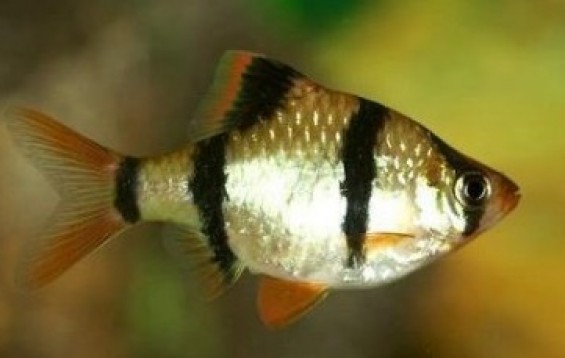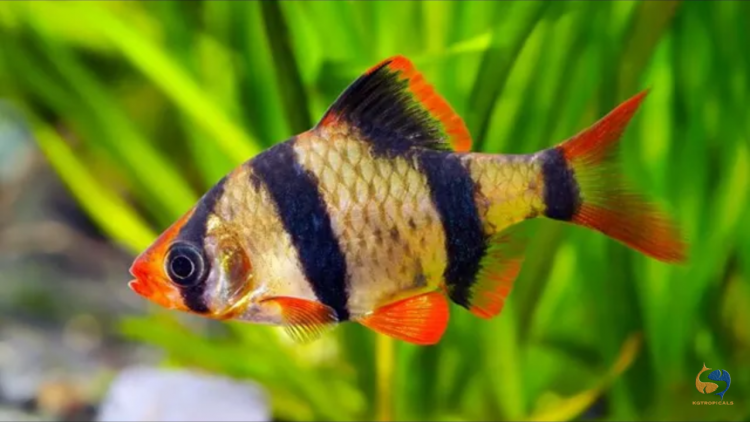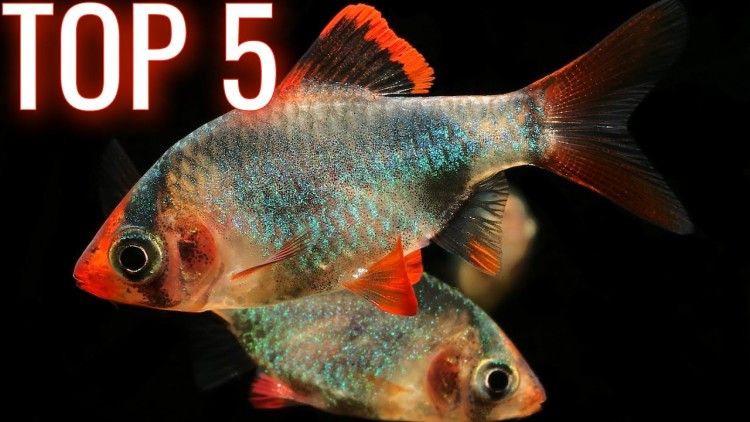- Name:
Tiger Barb
(View AKA's) - Family: Cyprinidae
- Species: Barbs
- Scientific Name: Puntius tetrazona


General info about Tiger Barb
These fish can be yellow, red or orange, they have 4 dark stripes and can reach 2.8 inches. To keep these fish in captivity, water pH should be between 6.0 and 8.0 and water temperature should range from 68ºF to 79ºF. The tank should have open areas for swimming, floating vegetation, driftwood roots, rocks and a sandy substrate. These fish can be kept in a community tank as long as its tankmates are of the same size like pelagic cyprinids and benthic cyprinids. They are quite energetic and like to bite the fins of their tankmates so they shouldn’t be kept with slow-moving and long finned species. Tiger barbs should be kept in groups of at least 6, keeping them in smaller groups will increase the likelihood of them bothering their tankmates. They should be kept in a tank of at least 30 gallons.
Tiger Barb Diet & Nutrition
This species is omnivorous. In captivity, it can be fed with flakes, pellets, frozen and live foods.
Determining Sex of Tiger Barb
Mature males are smaller and have a more intense color than females.
Breeding & Spawning Tiger Barb
These fish are egg scatterers that have no parental care. After spawning, the adults should be separated from the eggs. The eggs hatch in 24 to 48 hours and the fry become free swimming 24 hours after hatching.
Tiger Barb Origin
Green Tiger Barbs develop from Tiger Barbs, these can be found in Borneo, Sumatra and Malay Peninsula.
Caution with Tiger Barb
These fish like to nib on their tankmate’s fins.
Original Detail
| Name | Species | Family | Scientific Name | More Detail | Added by |
|---|---|---|---|---|---|
| Tiger Barb | Barbs | Cyprinidae | Puntius tetrazona | These fish can be yellow, red or orange, they have 4 dark stripes and can reach 2.8 inches. To keep these fish in captivity, water pH should be between 6.0 and 8.0 and water temperature should range from 68ºF to 79ºF. The tank should have open areas for swimming, floating vegetation, driftwood roots, rocks and a sandy substrate. These fish can be kept in a community tank as long as its tankmates are of the same size like pelagic cyprinids and benthic cyprinids. They are quite energetic and like to bite the fins of their tankmates so they shouldn’t be kept with slow-moving and long finned species. Tiger barbs should be kept in groups of at least 6, keeping them in smaller groups will increase the likelihood of them bothering their tankmates. They should be kept in a tank of at least 30 gallons. |
PalaciosAn |
Changed by users
| Submitted Date | Submitted By | Status | Action |
|---|





